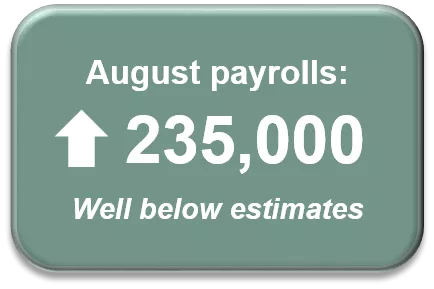September Economic Commentary: Multiple Headwinds Slow Economic Momentum

Chief Economist
Pohlad Companies
Recent economic reports are highlighting the combined impact of the Delta variant with the fading support of fiscal policy. In short, the economic recovery is losing momentum. Elevated inflationary pressures are impacting consumer confidence and their willingness to spend. All of these factors are considerations as the Fed determines the appropriate timing of the tapering of their $120 billion monthly asset purchases.
Consumer Income and Spending
With consumer spending responsible for about two-thirds of GDP, it is important to be aware of what the consumer is doing. On a year-over-year basis, personal incomes were growing at a 2.7% rate through July. However, when you factor in inflation, incomes are actually declining 1.4% year-over-year. The trend of negative inflation-adjusted personal income has been in place since April. When real income growth is negative, consumers typically slow down their purchases as they need to dip into their savings to make up the difference between inflated prices and their incomes. As consumer spending slows, we will see slower economic growth than we’ve recently experienced. We’ve started to see this with three consecutive months of declining retail sales. The expiration of the $300 per week unemployment benefit at the beginning of September will likely only exacerbate this trend.
The surge in consumer spending earlier in the year as a result of government checks pulled consumption forward into the spring. Consumer spending for the third quarter is expected to slow from the 11.9% annualized rate we saw in the second quarter to around 2%. Consequently, estimates for third-quarter GDP are being revised downward and are currently at 5%, after being as high as 8% a few months ago.
Inflation
The July consumer inflation data showed slowing in some of the areas sensitive to the re-opening of the economy such as used car prices, suggesting that these “transitory” pressures may be peaking. At the same time, however, inflationary pressures from increasing wages are building. The Atlanta Fed’s wage growth tracker has accelerated to 3.9% year-over-year growth. Producer prices remain elevated, too, as the impact of the Delta variant is impacting factory production in Southeast Asia, thus prolonging supply-chain disruptions.
Employment
The August employment report showed non-farm payrolls increasing by only 235,000, well below consensus estimates and a big disappointment after strong reports the previous two months. Employment in the leisure and hospitality sectors—the sectors most impacted by COVID—was unchanged after average monthly increases of 350,000 the prior six months. The size of the labor force increased by only 190,000 and is still 3 million below pre-pandemic levels. The unemployment rate declined to 5.2%, but with job openings at record levels and exceeding the number of unemployed, the labor market is tighter than the unemployment rate suggests.
What to Watch
There was little “new” news from the Fed’s meeting in Jackson Hole in late August. Chairman Powell repeated what was already known from the Fed’s July meeting. Although the diminishing impact of the fiscal stimulus was expected to cause economic growth to slow in the second half of the year, the surging Delta variant has added another variable to the equation as the Fed tries to determine the appropriate timing and pace of withdrawal of their monthly $120 billion asset purchases. Another weak employment report would likely push the beginning of the Fed’s tapering into early 2022 from late 2021.
The expectation is that the economy is moving back to trend-like growth rates. Nevertheless, there are obvious headwinds that could negatively impact economic growth in the near term: the path of COVID, ongoing supply chain disruptions, labor shortages, and elevated inflationary pressures. The navigation of these headwinds by policy makers, both monetary and fiscal, will determine how smoothly the expected return to trend-like economic growth occurs.
Insights
Research to help you make knowledgeable investment decisions
